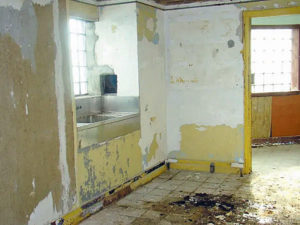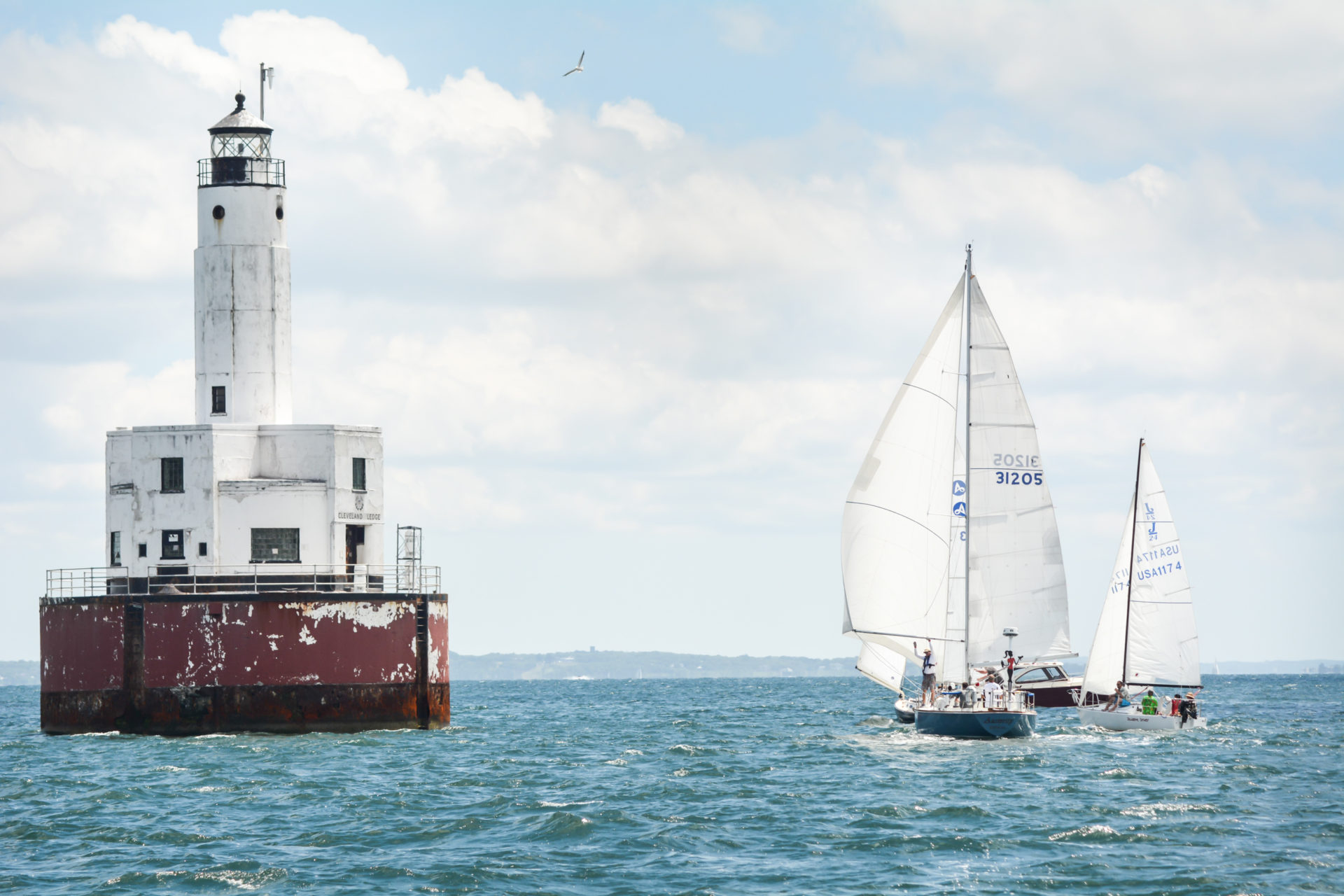Originally known as Pocasset Ledge, Cleveland Ledge, eight miles southwest of the entrance to the Cape Cod Canal, is named for President Grover Cleveland who frequently visited the area to fish. The decision to build a lighthouse there was part of a plan to convert the aids to navigation in Buzzards Bay from their original purpose of serving local navigation to the new purpose of guiding major shipping traffic through the Cape Cod Canal, which had opened in 1914.
The bidding for the construction of the new beacon was won by the J.F. Fitzgerald Co. of Boston in July 1940. The State of Massachusetts awarded the bid of $198,000 for the entire project ($3.7 million in today’s dollars). It was the first east coast lighthouse project undertaken by the government in twenty-five years and would be the last new lighthouse commissioned in New England.
On October 7, 1940, the caisson that would serve as the lighthouse’s foundation was towed to the ledge from New London, Connecticut. Essentially a man-made island, the caisson was sunk in 21 feet of water, then filled with stone and concrete. It was a massive, circular, iron-plated, reinforced concrete caisson measuring 52 feet in diameter and 52 feet tall with walls five feet thick to allow solid protection for the lighthouse from the unforgiving sea. On top of the caisson, a two-story building was constructed to house resident keepers, surmounted by a 50-foot reinforced concrete light tower. Below the main deck were an engine room, fuel tanks, and four water tanks with a capacity of 4,800 gallons.
The State turned over construction of the project to the Federal government in 1940, and it became the only lighthouse in Massachusetts to have been built by the U.S. Coast Guard. The sleek architecture of the structure is classified as Art Moderne, a trendy style in the 1930s and ‘40s. The new lighthouse was completed and commissioned on June 1, 1943.
Four men were assigned to the lighthouse. Each of the men had two weeks at the station followed by a week off. At the time, the interior of the lighthouse was described as “spit and polish spotless,” and as “warm as toast” inside thanks to a large oil furnace. The living facilities included a galley, a lounge, sleeping quarters, and a lavatory. A 44-foot patrol boat from the Woods Hole Coast Guard station visited weekly with supplies, which were hauled up to the deck at the lighthouse in a sling.

The lighthouse interior as photographed in 2012
The lighthouse originally had a Fresnel lens fueled by kerosene. In 1978, after laying of an underwater cable to supply power, the lens was replaced and the light was automated. The Coast Guard crew was removed and the lighthouse was sealed off.
Despite its history, the government ended up not knowing what to do with it. The lighthouse needed extensive repairs and was deemed excess property. It was put up for public auction in 2010 and sold for $190,000, becoming the first lighthouse in Massachusetts to be sold to a private person. The new owner is a California businessman, Sandy Boyd, who owned a dozen or so coffeehouses on the West Coast. As of 2012, Mr. Boyd was going through the permitting process to convert the lighthouse into a vacation home. Mr. Boyd spends summers in Nantucket, and his father was captain of the submarine USS Permit, so he is familiar with Massachusetts and things nautical. After renovations, the lighthouse may even be opened to “lighthouse junkies” for overnight stays. There has been no progress to report in the past 10 years.
The lighthouse remains an active aid to navigation, with a modern 190 millimeter optic displaying a white flash every 10 seconds, and an automated fog horn sounding every 15 seconds. It can be seen distantly from shore but is much better viewed by boat.
